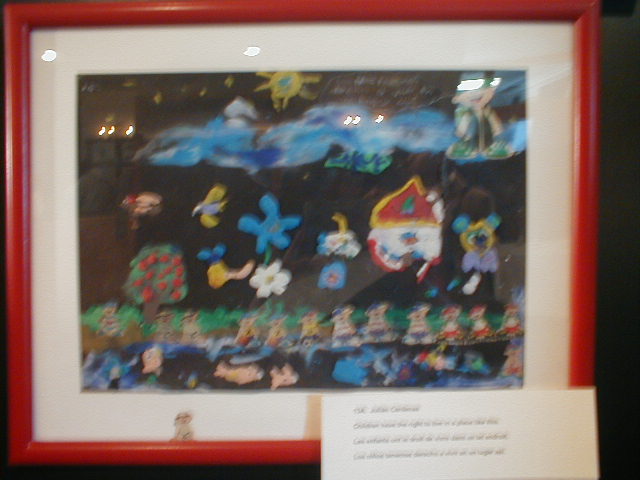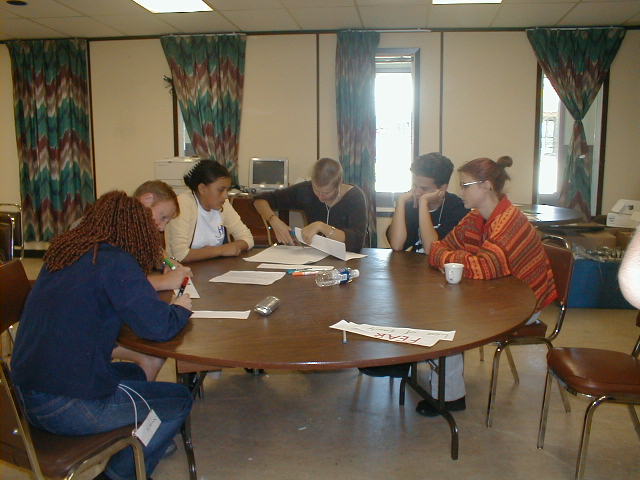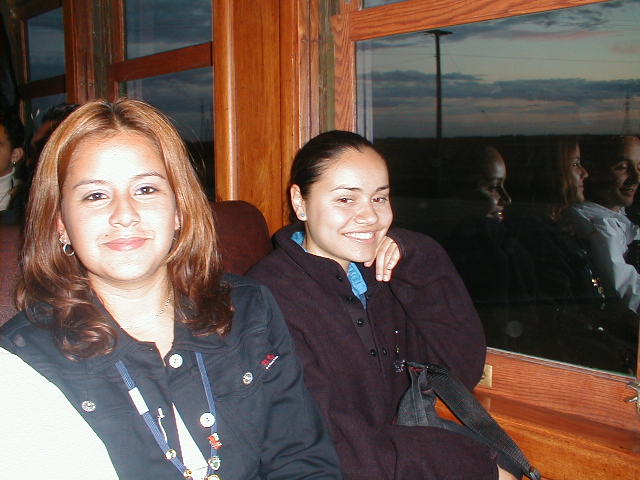Your
name is Miko. You live in Cambodia. One day, while playing in your family's garden,
you step on a landmine. You lose your left leg. There is a landmine somewhere
in the world for every eight children.
Your name is Carlos. You live
in Columbia. You are ten years old. You were abducted from your home and now you
are a child soldier. Young boys as young as six years old are known to be armed
soldiers.
Appendix B - Narrative Text
You
were awakened at 5:37 this morning by the sound of a gunshot. You instinctively
turned the radio on to hear the latest report. A bomb had gone off near your local
cultural centre. There were five casualties: two adults…and three children. Do
you know these people? Were they your neighbours? At 7:25 you leave for school,
you don't want to go for fear of coming home to a deserted house. As you walk
to school, you spot the body of a young man in a back alley. You are afraid…a
close friend was recently raped and another had been enlisted. It's difficult
to concentrate during class. How do you know that your school is safe? You think
of the three dead children. Few teachers and fewer students are showing up and
you decide to rush home before last period. You stop dead in front of your house.
Your windows are broken and vicious graffiti is spread out on the walls. As you
walk in, you hear the sobs of your mother. You find her bruised and bloody body
on the floor. Through her wailing you understand that your father has been arrested.
You've heard stories about the prisons but hope that they weren't true. You also
know that your mother has been raped although you won't admit it to yourself.
That evening, your mother packs small bags for you and your siblings; you are
being sent to live with distant relatives. She is staying to wait for your father.
Now you can only pray that they will survive.
Appendix
C - The Quiz
1. How many landmines are still burning in the
10 main affected countries (Peru, Ecquador, Chile, Bolivia, Argentina, Columbia,
Nicaragua, Honduras, Costa Rica, and Guatamala)?
a) 100,000
b) 1 million
c) More than 1 million
2. How many children are killed by landmines
each month?
a) 1,000
b) 800
c) 500
3. How many children
have been killed in the last 10 years as a result of wars and armed conflict?
a) 2.5 million
b) 1 million
c) 2 million
4. How many children
under 18 are currently taking part in hostilities around the world (i.e. child
soldiers)?
a) 300,000
b) 200,000
c) 100,000
5. How much
money (in US$) does the world spend every year on the military?
a) 420 billion
b) 740 billion
c) 230 billion
6. What percentage of people killed
in war are civilians?
a) 60 %
b) 75 %
c ) 90 %
Cool
Websites – Appendix D
Taking Action! Places to Start Here's
some websites that we found that are a good source of information and ideas on
actions that you can take.
War Affected Children
www.waraffectedchildren.gc.ca
∑ This website provides information, multimedia features and interactive elements
on the events leading up to and including the International Conference on War-affected
Children. See what national and international actions are being taken to address
the issues.
Oxfam: Get Involved www.oxfam.org.uk/get_involved.html
∑ As well as actions you can take on-line now, there are opportunities to
get involved with Oxfam as a volunteer. This site provides information you need
to take part in upcoming campaign and fundraising events.
Students
Against Landmines www.cyberfair.gsn.org
∑ An interactive Web site created by students to help other students
learn about issues surrounding anti-personnel landmine.
UNICEF
– Voices of Youth www.unicef.org/voy
∑ Take part in an electronic discussion about the future of youth.
War
Child www.warchild.ca
∑ Besides
information on the organization and its humanitarian activities including War
Child's fundraising concerts, public appeals, and other entertainment events.
Amnesty www.amnesty.ca
∑ Work for human rights on an ongoing basis by becoming part of the world's
largest rights organization.



